So, we are finally gonna start with this conversation, mainly because it seems to be the hugest issue that your average non-Muslim westerner will bring up regarding women in Islam. This took forever to actually put together, so pay attention.
Welcome to the first section of Part One in my Veiled Contempt series.
The veil.
This particular subject in itself is huge, and how it is addressed is rarely unproblematic for the people actually faced with the prospect of wearing something that has so many shades and degrees of meaning from place to place.
Very often, at least in a good deal of the popular culture that I have seen, the concept of veiling is either painted as absolutely oppressive, all the time, no matter what, or as an object of ridicule.
This part of this series will serve as a sort of primer on basic veiling names and facts, as well as dispelling some myths about the practice itself. I will add a disclaimer, this information should not necessarily be considered comprehensive. It is based on a few years of research on my part but there is a huge wealth of information on this topic. This piece barely scratches the surface.
First thing that must be understood: not every Muslim women veils. Not every predominantly Muslim country requires it either. Most don't require anything in the way of head covering for women, in some Muslim countries the practice is discouraged or outright banned in certain areas and even in the countries where it is required, veiling as it is recognized by non-Muslim westerners, and even some Muslim westerners, is a largely urban and recent phenomenon that has a huge variance from country to country, ethnic group to ethnic group.
Next thing that must be understood: there are many different variations of veil, all of which have their own name, and their own history, locality and meaning.
The headscarf, or hijab, is the most ubiquitous symbol of female Muslim identity to outsiders. There is no doubt in your mind when you see a woman wearing any one of the possible variations of the veil as to how this woman identifies herself. However, there are a multitude of questions as to why a woman would identify herself so openly in this way. In response to that, there is a multitude of reasons for wearing it, dependent on factors such as location, culture and interpretation of religious texts. Depending on where the woman is currently located, and where she is originally from, the veil can have many meanings, many purposes and many “why’s” attached to it. In today’s world, the veil has significant social, religious and political implications.
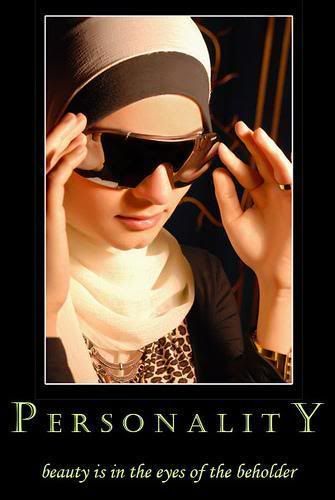
There are different variations of the veil, each of which has a slightly different implication. To list them fairly quickly, there is the hijab or headscarf, which can be found throughout the Middle East as well as in Turkey; there is the jilbab, often associated directly with the hijab; the niqab, which is not only the jilbab and the hijab but also a covering for the face which leaves only the eyes showing; the chador, or “sheet” which is a large piece of fabric, or a cloak that is wrapped around the body and head and is found mainly in Iran and Pakistan; the burqa, which is usually a large tent-like garment with a screen to allow the wearer some vision, and is found mainly in Afghanistan; and lastly the abaya, a flowing garment which is normally black that covers from the head to the ankles and can be found all over the Middle East. The style which is used to wear and decorate the various different methods of veiling can be an indicator of regional origin. The niqab can be as simple as a black outer garment worn when one goes out, to an elaborately decorated headdress made with leather and sewn on metal decorations. The simpler version generally indicates an urban dweller, whereas the more elaborate niqab is an indicator of a smaller, more rural village dweller. The style in which a hijab is wrapped about the head is also an indicator of regional origin. Hijabs in Egypt are very different from hijabs in Turkey.
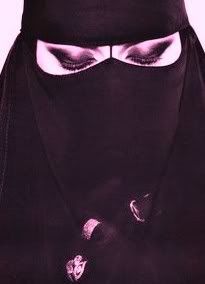
The obvious meaning of the veil is to establish visual evidence of differentiated roles for males and females within Islamic culture. The actual source of the veiling tradition pre-Islam is unclear, but there are many theories. One theory is that women would cover themselves in the desert to prevent the dust and sand from ruining their clothing, or to prevent them from being made a target for raiders. In a strictly Islamic interpretation, it indicates something quite different. There are clothing and headwear prescriptions for both men and women within Islam, but they have one major difference. In every mention of men covering their heads it is with some reference to the divine. Men were to cover their heads to show a relationship to God, whereas women were to cover their heads as an indication of separation from certain aspects of social interaction and as an indication of modesty.
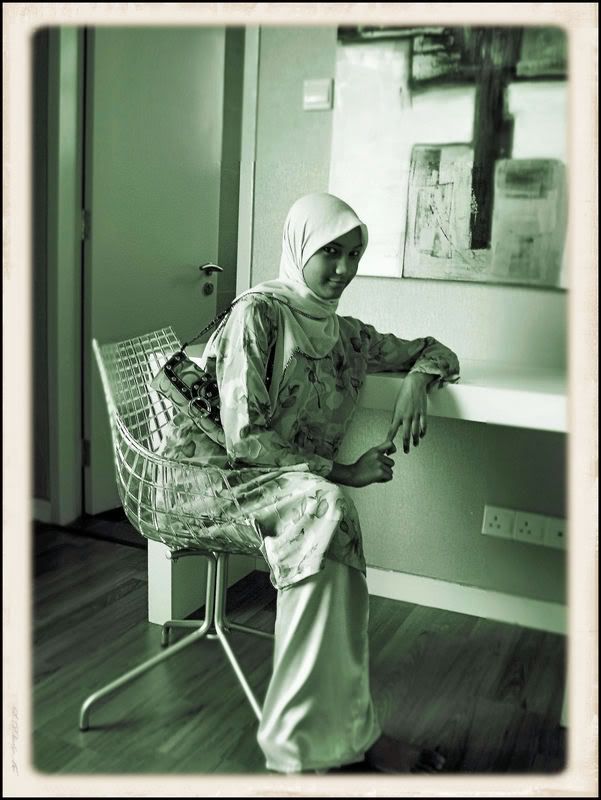
There are religious writings that have been used by many different groups and individuals to enforce a version of the veil on women. Two Surahs specifically indicate that a woman should cover. Surah An-Nur (24:31) advises women to “draw their veils over their bosoms and not display their beauty except to their husbands, their fathers, their husband’s fathers, their sons, their husband’s sons, their brothers or their brother’s sons or their sister’s sons, or their women or the slaves whom their right hands possess or male servants free of physical needs or small children who have no sense of the shame of sex.” Essentially, this Surah dictates that women should only show their “beauty” to their husbands or to those who are ineligible to be their husbands. This Surah has been used to not only make the argument for veiling, but to make the argument for nothing more than modesty. It has been taken to the other extreme as well, and has been used to justify extreme examples of veiling, which will be discussed later.
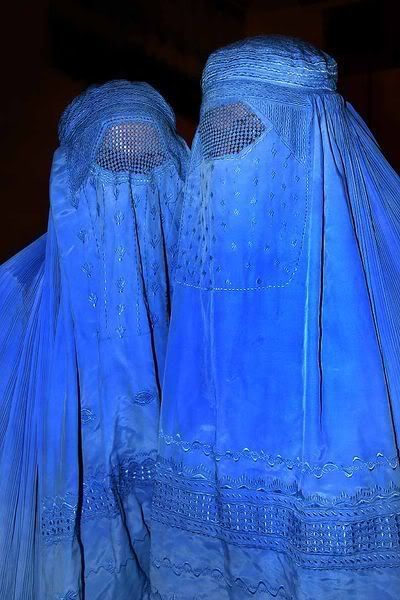
There is also Surah Al-Ahzab (33:59), which delivers a more direct command: “O Prophet! Tell thy wives and daughters and the believing women that they should cast heir outer garments over their persons [when abroad]: that it is most convenient that they should be known [as such] and not molested: and God is Oft-forgiving, most merciful.” In this passage, the word “outer garments” used here is jalabeeb, plural of jilbab, which is a long gown covering from the neck to the ankles. This Surah is also used to justify extreme veiling.
The current trend of young, second generation Muslim women in western countries beginning to veil when it had not been a well observed practice in their families has been attributed to these two Surahs, the translations of them in English and the interpretations thereof. Many of these young women are interpreting veiling as fard, or religious duty. This has become more important in recent years as the popularity of multiculturalism has expanded. There has always been an attitude of assimilation for immigrants to America due to how recent immigrants ahve been and are treated as "other" and marginalized, and in the late 80’s/early 90’s it wasn’t seen as very “cool” to be anything other than mainstream, so immigrants to places like north America were more likely to try and assimilate in order to gain social recognition and reduce the “otherness.” In the last decade or so being ethnic in some way has become more fashionable and therefore more desirable. With the idea that asserting ones ethnic identity is a way of gaining social status, it has become important to some women to assert a specific part of their identity. Since it is a bit more difficult to assert a specific ethnic identity and still maintain a fairly decent social circle without being deemed racist, it has become easier to bring a religious identity more to the forefront and to still be inclusive. It has even gotten to the point where instead of trying to blend into the usual social hierarchies in school, or in public, it is easier to carve out a specific social niche in which everyone who is part of the group shares some visible evidence of their identity. This particular evidence has become so popular that there is a fairly brisk market for these culturally specific garments and businesses have sprung up amidst the demand.
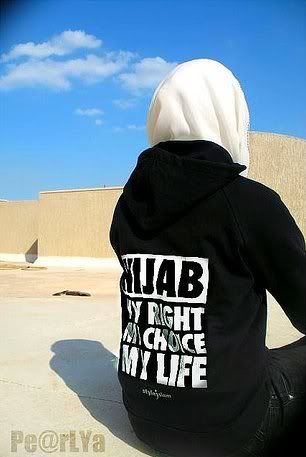
The veil also has social implications, which are very dependent on the location and culture of the veiler. The most common social implication of the veil is the protection from harassment. Many women who choose to veil have found that by asserting their identity as a pious Muslim woman, they are either left alone when it comes to unwanted sexual advances, or they are able to take a higher moral ground because of it. In my own experience of wearing a veil her on the streets of Philadelphia, I did notice a difference in the way I was treated by men. I found that I was stared at less, and the cat calls that have been a fact of my life since the onset of puberty had all but stopped. It has been stated in several different studies on the choice to veil that many women witnessed a reduction in how much they had to deflect unwanted advances once they assumed the veil.
However, this does not always apply. In a conversation on NPR that I had with Azar Nafisi, the author of Reading Lolita in Tehran, I asked her about this in regards to the forced veiling of Iranian women. She said that while that was used as the official justification for enforcing the veil, in her experience it only made street harassment worse. According to her, this was mainly because the assumption of the veil was compulsory and had many different veins of logic behind it, not the least of which being the assumption that women were inherently a temptation to men and had to be covered to protect men from their “seductive powers.” This mindset, even under the guise of protecting the women, only served to put them at greater risk. Mrs. Nafisi emphasized that the important part of this was the choice to veil. When veiling no longer becomes a choice and is compulsory, it loses any moral high ground or credibility because it is no longer a sign of the individual woman’s piety, but a social mark of inherent licentiousness.
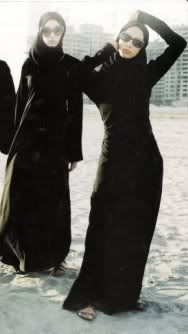
Another social implication of the veil is the reactions of western non-Muslims to women who veil in their midst. There are a great many assumptions about the veil and the purpose of it in the west, and there have been some recent negative reactions to veiled women in supposedly “liberal” countries.
The first and most obvious example is the French ban on obvious religious clothing or symbols in public schools. This ban states that religious headwear is not allowed in a publicly funded institution. The argument is that because France is so secular, and assumes that a great deal of its citizens are also secular, they do not want to be seen as endorsing any particular religion. There is also the argument that the veil is something that is forced on women by their fathers, husbands, or other family members and the government has to be willing to protect them from that. This is an understandable desire, however, the premises that it is based on are false. The vast majority of women who live in western countries who veil do so by choice. Their families often resist them in their decision to veil, as a part of not wanting to stand out as ethnically different and because of the implications of identifying openly and visually as a Muslim in a world where there has been a great deal of violence attributed to Islamic fundamentalism and where many people assume that “Muslim” and “terrorist” are synonymous.
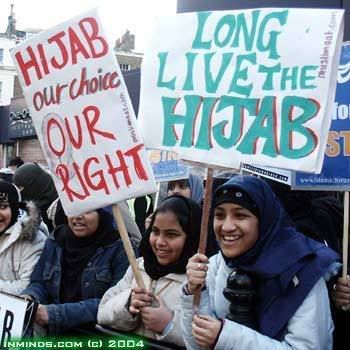
Another case is Britain. A few years ago a British elected official began to insist that if any of the veiled Muslim women in his constituency wished to speak to him, they would have to remove their face veil. He called it a “visible sign of difference” and insisted that he would not accept people trying to separate themselves from the rest of the world. If they wanted his attention, they had to remove their veils. It was obvious that he had no idea what he was asking and had no idea about the significance of the veil. He too, assumed that it was something forced on these women by possessive husbands and exclusionary cultures. It did not cross his mind that perhaps this woman chose it for herself and sees it as a sign of her devotion to God. He assumed, like so many others, that he was “saving” these women and giving them a chance at being “free.” Quite often, as I mentioned earlier, veiling is chosen. There are only a few countries that require women to veil and even in those countries there are rural areas where it is not observed as extremely as it is in the city centers. Some cultures that have a large Muslim population do not allow women to veil, so when they come to a western country that prides itself on freedom to worship, they choose to worship in a way that was denied them before. If a woman is from Indonesia or Turkey and chooses to veil when in a western country, this is most likely because in her country of origin, she is either socially discouraged, or outright denied the choice.
Possibly the largest implications connected to the veil are the political implications. Politically, the veil can function in many ways, but the ones that I will discuss here are the uses of the veil as a sign of either obedience or defiance of the government, and the veil as a sign of protest against the West.
There are at least three major countries in the Middle East that strictly enforce a veiling policy for their female population, Iran, Afghanistan and Saudi Arabia. Each of these countries policies has their roots in various political and religious justifications. In Saudi Arabia, the niqab is the required form of veiling for any time that a woman leaves her home. The restrictions go much deeper than that, and extend to women’s ability to travel alone or obtain anything without the permission of a male guardian. The source of this proscription for veiling is the very conservative Wahabi Islam that is integrated with the power of the monarchy. In Afghanistan, the burqa is the proscribed form of the veil. In the past this was instituted by the Taliban which went as far as to prevent women from going to school, and would have morality police that would beat women and punish their husbands if their veiling was deemed insufficient. There is still an on-going issue in Afghanistan regarding the behavior of women that some groups find to be "impious," leading to horrible actions, like throwing acid on women who dare to attend school. Finally, in Iran, the chador was introduced as a required dress for women whenever they left their homes. This began as part of the movement that eventually led to the Islamic revolution. It was considered to be a way of rebelling against the influence of the west on Iranian culture and the sexualization of women for profit. It later became a way of showing ones obedience to the government. If a woman is not veiled properly, she can be arrested on indecency charges and be given a years-long prison sentence. The severity of how this is enforced waxes and wanes depending on current political tides.
These three locations have a few obvious things in common, the first of these being the government enforcement of dress using the excuse of “morality,” the second being the penalties for violating the dress code. All three use the previously discussed religious texts to justify these policies. The second two have one more thing in common. In both Iran and Afghanistan, these policies came as a reaction to the increasing encroachment and interference of the west on these specific countries.
On the flip side, there are countries that have outlawed the veil in the past and continue to actively discourage against it now. One is Turkey, a country that is based in Ataturk’s vision of a completely secular state. Ataturk himself put legal limits on religious dress during his lifetime. These laws have been revoked for the most part, but one is still hard pressed to find a woman in a position of political or social power in turkey who actively veils in public. Here have also been several movements in Egypt to block the veil, and in response veiling has grown as a sign of political protest.
In conclusion, it is obvious that with the complexity of the practice of veiling it is foolhardy at best and completely ignorant at worst to make assumptions about a woman who veils or doesn’t and about her impetus for doing so. As far as my personal opinion on the practice, I feel that it can be an important form of identity assertion and a way to express oneself socially, politically and religiously. That being said, I support the practice, provided it is a choice. If it is forced it loses all meaning except the political and that does nothing but cheapen the religious and cultural reasons for choosing it. In the flip side of that argument, forcing a woman to remove it when she does not wish to shows the same disregard for her agency as forcing her to wear it does, and as a double strike, is able to be couched in supposedly progressive rhetoric which, under the surface, has very little to do with "progress" and has everything to do with control. In the next section of this series I will address a deeper analysis of this practice, and the western equivalents thereof.
Wow, you're SO opinionated! Me too. I like what you have to say and have quoted your closing remarks... hope ya don't mind. Thanks sis.
ReplyDeletePeace,
aisha
Can I borrow the personality photo for my blog?
ReplyDeleteGo ahead Suzer! Enjoy it :D
ReplyDelete